My father Dennis Bennett's family from South Africa/England
Dennis Bennett was the elder son of Edward Gibson Bennett who had married Ivy May 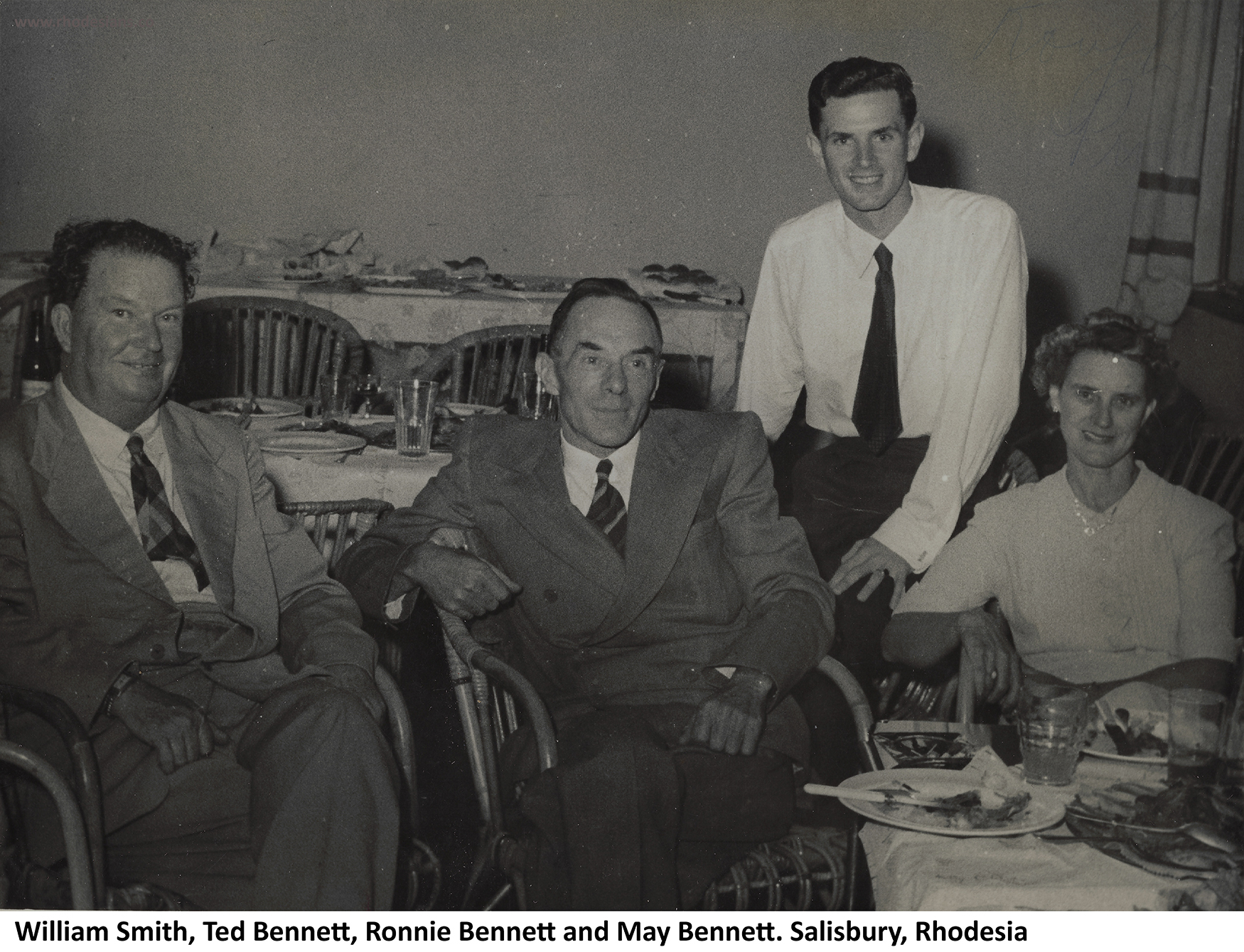 Orsmond. Dennis was born in Salisbury in 1922 but his father, known as Ted, had been playing rugby for East London in King Williamstown in the Eastern Cape of South Africa. He was injured and after the match he stayed with an opponent William Smith until he had recuperated. His younger niece, Ivy May Orsmond, met Ted in the house, and she was known as May. Her mother, Mary Alice Smith had been born at Newcastle upon Tyne but the family moved to King Williamstown and May had been born there in 1901. May traces back to the 1820 Settlers of South Africa through her mother.
Orsmond. Dennis was born in Salisbury in 1922 but his father, known as Ted, had been playing rugby for East London in King Williamstown in the Eastern Cape of South Africa. He was injured and after the match he stayed with an opponent William Smith until he had recuperated. His younger niece, Ivy May Orsmond, met Ted in the house, and she was known as May. Her mother, Mary Alice Smith had been born at Newcastle upon Tyne but the family moved to King Williamstown and May had been born there in 1901. May traces back to the 1820 Settlers of South Africa through her mother.
Ted was born in East London, South Africa in 1895 but his father, Samuel Gibson was a Bridgemaker from Cornwall, England.
Ted’s mother, Annie Mary was from Devon, England.
Several of the Orsmonds and Smiths moved from the Cape to Salisbury. Ted Bennett had not completed his schooling but was working for Anglo Africa before he served in World War I.
Nothing was ever said about his time in the Great War except in 2004 after Dennis Bennett, had passed away from a stroke in Harare, Zimbabwe and Steve was documenting family history with his mother when she was staying with him in Sydney. All she knew was that Ted had suffered from emphysema from the mustard gas in the trenches in Europe. He had been captured and was sent as a prisoner of war to Germany.
Ted Bennett would have enlisted with one of the regiments of the 1st South Africa Infantry Brigade. The 1st South African Infantry Regiment was raised from the Cape Province of 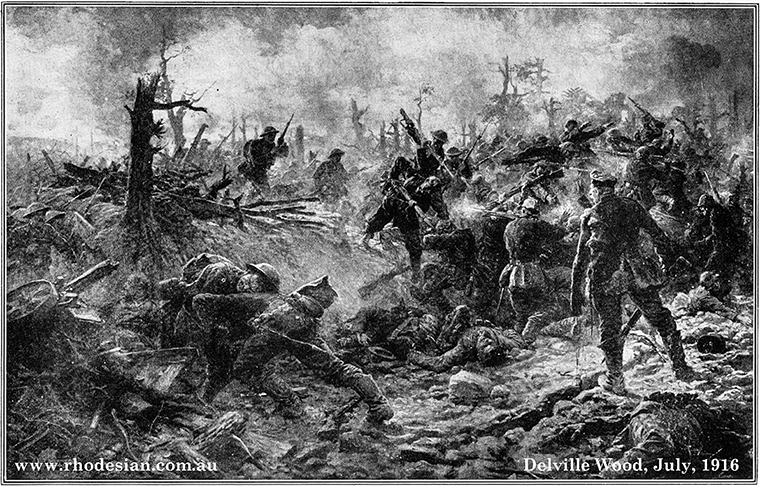 South Africa. The 2nd South African Infantry Regiment was raised from Natal and Orange Free State. The 3rd South African Infantry Regiment was raised from Transvaal and the Rhodesia Regiment. The 4th SA Infantry Regiment became known as the South African Scottish Regiment.
South Africa. The 2nd South African Infantry Regiment was raised from Natal and Orange Free State. The 3rd South African Infantry Regiment was raised from Transvaal and the Rhodesia Regiment. The 4th SA Infantry Regiment became known as the South African Scottish Regiment.
The Brigade, numbering 160 officers and 5,648 other ranks embarked at Cape Town between 28 August and 17 October 1915, and all units reached England by November. The infantry were quartered at Bordon in Hampshire for further training for the next two months.
In December the Brigade was sent to Egypt. After successfully bringing this campaign to a close, Brig Gen Lukin and his brigade were transferred to France.
The Somme offensive opened on 1 July 1916 and was initially intended as a diversionary battle to draw German forces away from the French front at Verdun which was under severe pressure.
The most costly action engagement for the South African forces on the Western Front fought was the Battle of Delville Wood in 1916. Out of the 3,153 men from the brigade that entered the wood, only 780 were present at the roll call after their relief. In the roll of honour, Edward Gibson Bennett is recorded as deceased but I assume that refers to when my grandfather was captured but he survived as a prisoner of war.
He married in 1921 and the family lived in The Avenues. Dennis then Ronald, known as Ronnie, was born. His Uncle Willie owned a butchery at the Jumbo Mine so Dennis spent most of his school holidays there.
Ted had returned to work in the spares department in Anglo America until they were 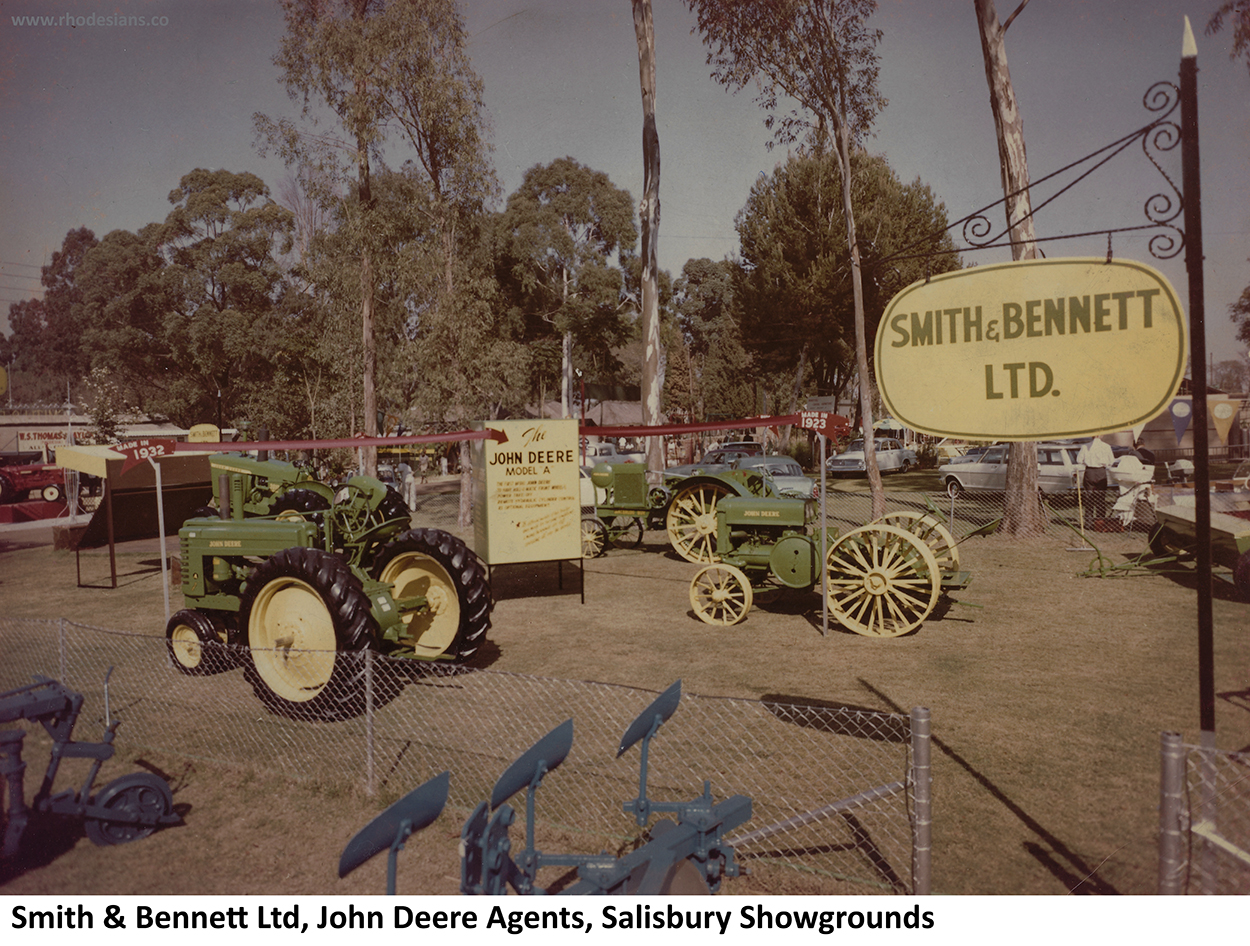 liquidated. Pascoes, Larters and William Smith funded ‘Smith and Bennett’ the John Deere agency which was run by William Smith and Ted Bennett. While this was being established my grandmother, May Bennett, went to South Africa and my father and his younger brother attended Selbourne School in East London, South Africa. Dennis only had a Prince Edward blazer so he learnt very quickly how to stand up for himself.
liquidated. Pascoes, Larters and William Smith funded ‘Smith and Bennett’ the John Deere agency which was run by William Smith and Ted Bennett. While this was being established my grandmother, May Bennett, went to South Africa and my father and his younger brother attended Selbourne School in East London, South Africa. Dennis only had a Prince Edward blazer so he learnt very quickly how to stand up for himself.
Back at Prince Edward School again, boxing, rugby and cricket were the sports that he played but he couldn’t represent his school at those sports except for boxing because inter-school boxing matches were held during the week. On weekends when other sports were played he went with the family to Jumbo Mine.
After his ‘O’ level results came out at Easter in 1940 he enrolled at Rhodes University at Grahamstown in South Africa to study for a B Comm .
One of the seniors at Rhodes had been ahead of him at Prince Edward and was involved with Freshers’ integration. He exerted pressure until Dennis signed up to Box again even though he would have preferred to play other sports.
During one tournament he defeated an Eastern Province champion. It is possible that the champ had not prepared adequately against the unknown young university student but after his shock loss he insisted on a rematch. This return bout was somewhat one-sided but Dennis noticed that the champion winced after he had landed a body shot. After another good whack the champ dropped and was hospitalized with a broken rib. This actually saved his life because during examination he was found to have a defective heart so this was remedied. It ended the champion boxer’s career but it also enabled the new “Champ” on the campus to retire from boxing too.
Dennis finished his degree at the end of 1942. During vacations he had gone to  Onderstepoort for military training while serving in the First City Reserves. He went straight into the 17th Rhodesian battery which was in Reconnaissance in the 6th Armoured Division of the Union of South Africa Army. He did a few weeks training in Salisbury at the beginning of 1943. Helen Ritchie was teaching Latin and Maths at Umtali and they got engaged. He went with 17th Rhodesian Battery to Pietermaritzburg for more training then was excused to attend his graduation in April but returned immediately to Pietermaritzburg.
Onderstepoort for military training while serving in the First City Reserves. He went straight into the 17th Rhodesian battery which was in Reconnaissance in the 6th Armoured Division of the Union of South Africa Army. He did a few weeks training in Salisbury at the beginning of 1943. Helen Ritchie was teaching Latin and Maths at Umtali and they got engaged. He went with 17th Rhodesian Battery to Pietermaritzburg for more training then was excused to attend his graduation in April but returned immediately to Pietermaritzburg.
By then the South African 6th Armoured Division had been amalgamated. It was based on a nucleus of men from the former South African 1st Infantry Division who had returned to South Africa after the Second Battle of El Alamein. The Fourth Rhodesian Anti-Tank Battery had seen service in Egypt and also reported back to South Africa after one month’s leave. The newly formed 17th Rhodesian Battery also joined the 6th Armoured Division in Pietermaritzburg. They sailed from Durban on “Ile de France” on 18th April 1943 landing at Tewfik on 30th April. They were loaded into cattle trucks to the Divisional Camp at Khatha between Cairo and Alexandria.
Training began in the desert at Khataba, North West of Cairo.
Ian Smith, a Chaplin boy, went to Rhodes in 1938 so was two years ahead of Dennis. Rhodesian students were required to complete their studies before enlisting for WWII service but Smith stubbornly got an exception which enabled him to enlist for Air Force training. After an initial six weeks in Bulawayo with Initial Training Wing he went to Elementary Flying Training School outside Gweru.
After hitting a bomb shelter with his undercarriage on take-off very early one misty 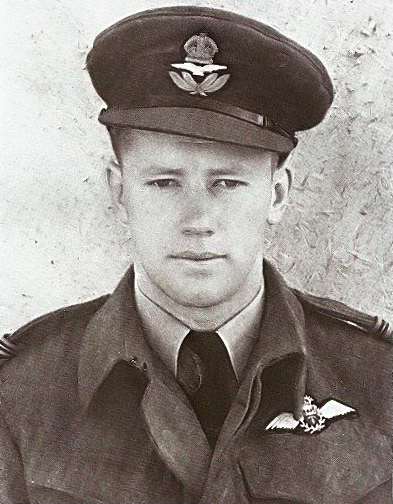 morning or some said it was very late one night in Alexandria, he spent five months in the Fifteenth Scottish Hospital on the banks of the Nile. Shortly after the incident, Dennis needed to get treatment for a stye in his eye as he needed perfect vision to operate in the Observation Post role so had been joined on the walk to the hospital by his friend Rodger Scott who wanted to call on “Smithy”. After Dennis had received treatment he went to the ward where Smith was. Scott had already departed but as Smith’s face was bandaged and his jaw was wired up, he couldn’t speak. Dennis was handed the notebook so read the brief communication.
morning or some said it was very late one night in Alexandria, he spent five months in the Fifteenth Scottish Hospital on the banks of the Nile. Shortly after the incident, Dennis needed to get treatment for a stye in his eye as he needed perfect vision to operate in the Observation Post role so had been joined on the walk to the hospital by his friend Rodger Scott who wanted to call on “Smithy”. After Dennis had received treatment he went to the ward where Smith was. Scott had already departed but as Smith’s face was bandaged and his jaw was wired up, he couldn’t speak. Dennis was handed the notebook so read the brief communication.
Scott had written “Were you pissed?”
“**** off”.
Smith resumed flying again at Corsica in May 1944.
At the end of the next month, during a strafing attack on a railway yard in the Po Valley in northern Italy, Flt Lt Smith was leading the six Spitfires along a railway line and locomotives and fuel tanks had been hit without any opposition. Smith made the mistake of going back for a second run and while pulling up after attacking a line of tank cars, anti-aircraft fire hit his Spitfire.
Parachuting from his aircraft, he landed without serious injury and spent three months working with the local partisani resistance movement before crossing into France with three other Allied personnel and was then ferried by the maquis. He linked up with US forces and was repatriated to the UK.
Smith was then retrained in Britain before he was posted to No 130 (Punjab) Squadron in Denmark then to Celle in western Germany in April 1945, then Stockholm, and finally to Kristiansand in Norway as part of the operation to clean up the remaining Germans.
Reverting back to the 17th Battery: One year after arriving in the Middle East, they left Gaza Station for Port Said on 13th April 1944. They boarded the s.s. Sobieski, setting sail the next day for Italy. The Fourth Rhodesian Anti-Tank Battery was on the same vessel as the 17th Rhodesian Battery.
They disembarked at the port of Taranto on 20th April and moved to Altamura. After a fortnight the 17th Battery joined 12th Motor Brigade. The brigade came under the command of the New Zealand Division which was deployed as part of the British Eighth Army.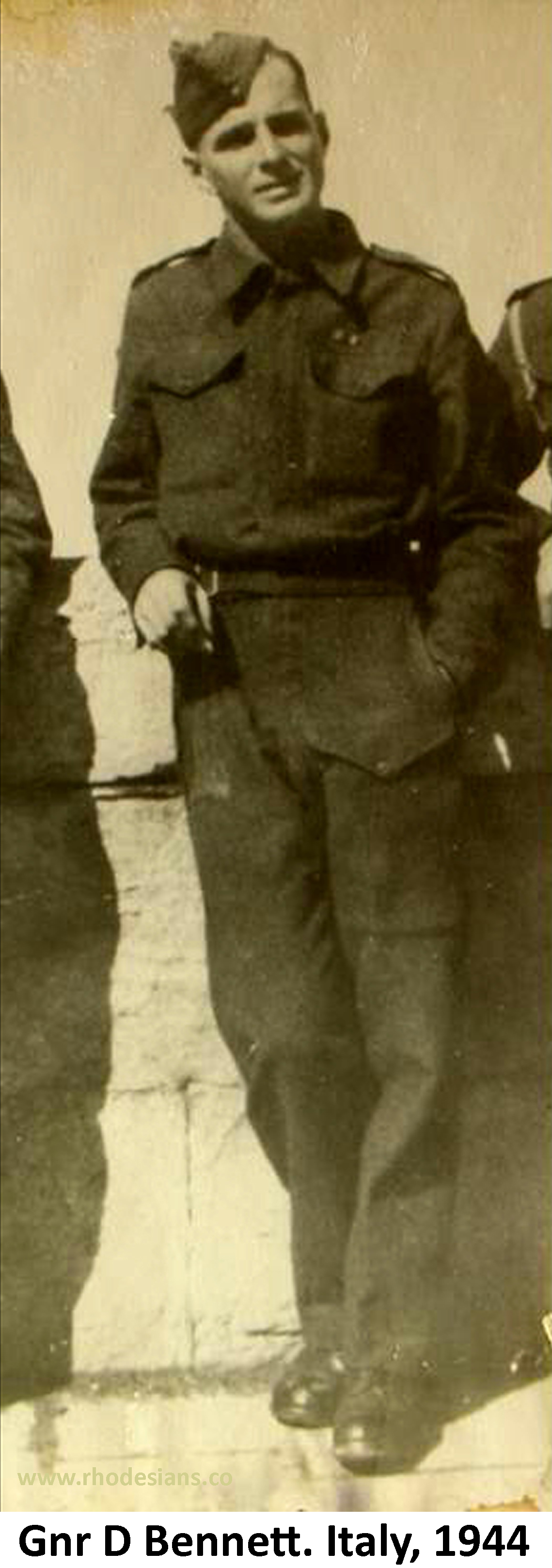 The 17th Rhodesian Battery went into action for the first time in a static holding role at Acquafondata, eight kilometres from Monte Cassino. Many of the mountain peaks were covered with snow; it was very cold and raining. There was a constant call for fire from the guns because of mortar fire so gunners were on 24 hours duty and teams were divided into two shifts.
The 17th Rhodesian Battery went into action for the first time in a static holding role at Acquafondata, eight kilometres from Monte Cassino. Many of the mountain peaks were covered with snow; it was very cold and raining. There was a constant call for fire from the guns because of mortar fire so gunners were on 24 hours duty and teams were divided into two shifts.
The battery played a small part in the colossal barrage that took place in the Battle of Monte Cassino in the Gustav Line from the night of 9th April 1944. About 2,000 guns of various calibres were used and they outnumbered the Germans by twenty-two to one. Each day the fury increased and the Germans were forced to withdraw. Just prior to the breakthrough, the 12th South African Motor Brigade was pulled out of the Line and re-joined the Division which was given several objectives on the route to Rome. At this stage and through most of the Italian campaign, the 17th Rhodesian Battery supported the Witwatersrand Rifles and 1 Regiment De La Rey that had merged to become known as WR/DLR battalion. The battery provided firepower from 24 pounder guns and as soon as firing ceased the infantry overran the target area so the two units got to know each other’s methods intimately.
One of the most interesting objectives was Paliano which was overrun and after Rome, Florence was the objective. Battles were fought at Castellana, Bagnoiregia, Cetona, Sarteona then Florence where the last stages were a race between the New Zealand and South African divisions. Gunners were on 24 hour duties at Impruneta where the situation was static over several days but Florence was taken on 4th August 1944.
The division was relieved by Canadians and a rest was enjoyed at Sienna. They were called back early after only 14 days to the United States Fifth Army. Within a day they were in 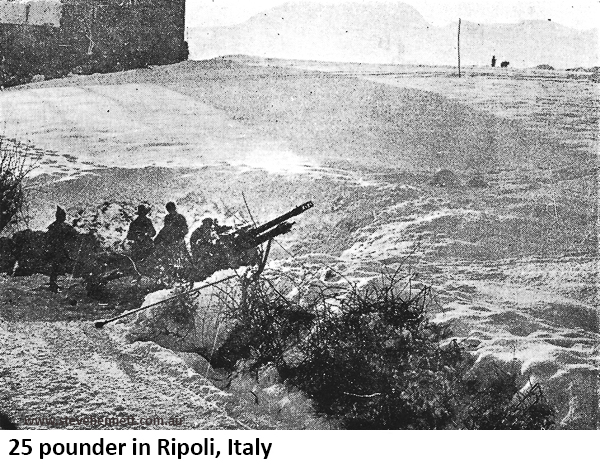 action near Ginestra south of River Arno then after moving through mountains the battery was deployed south of the Prato-Pistoia plains. Once back in mountains again north of Pistoia they were static for 14 days then the next encounter was at Carmugnano. This was fierce and in heavy rain through to Mt Salvaro. Interrogation of prisoners at Mt Stanco on 14th October 1944 was very flattering for the captors. The Germans had sent reinforcements from the Russian front because Hitler knew that Germany was exposed in the south even before the Italians had capitulated. Some Panzers had been captured amongst the Germans. Never in Russia or any other field of battle had they experienced such accurate and concentrated artillery fire as from the 17th Rhodesian Battery, or so they said when captured. When the artillery fire was lifted, the Germans were preparing for the infantry attack but WR/LDR were there and in some cases were already behind them.
action near Ginestra south of River Arno then after moving through mountains the battery was deployed south of the Prato-Pistoia plains. Once back in mountains again north of Pistoia they were static for 14 days then the next encounter was at Carmugnano. This was fierce and in heavy rain through to Mt Salvaro. Interrogation of prisoners at Mt Stanco on 14th October 1944 was very flattering for the captors. The Germans had sent reinforcements from the Russian front because Hitler knew that Germany was exposed in the south even before the Italians had capitulated. Some Panzers had been captured amongst the Germans. Never in Russia or any other field of battle had they experienced such accurate and concentrated artillery fire as from the 17th Rhodesian Battery, or so they said when captured. When the artillery fire was lifted, the Germans were preparing for the infantry attack but WR/LDR were there and in some cases were already behind them.
On 2nd April 1945 the Division returned to its former positions in the front line. Once 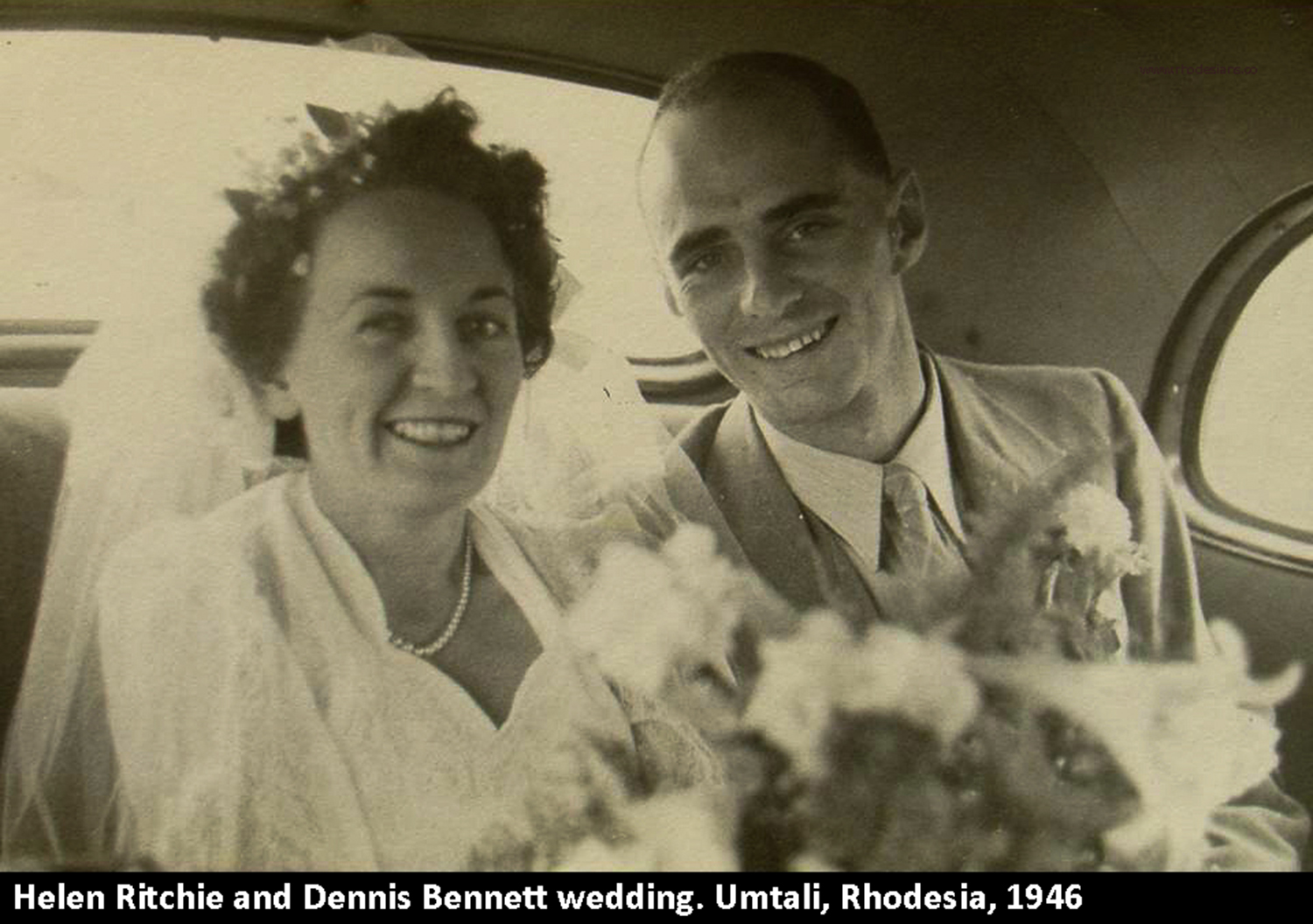 again, the battery was attached to their old friends the WR/DLR Battalion with the objective being Mount Capraro and Mount Castellina. Concerted effort brought rewards then a few days later Mt Baco was taken without much resistance after 3,280 rounds had been fired by the guns in the first 24 hours.
again, the battery was attached to their old friends the WR/DLR Battalion with the objective being Mount Capraro and Mount Castellina. Concerted effort brought rewards then a few days later Mt Baco was taken without much resistance after 3,280 rounds had been fired by the guns in the first 24 hours.
The pursuit continued through the Po Valley and there was some resistance at Camposanto on River Panaro. The race continued to River Po but clean-up operations mainly involved infantry. However a few targeted shells encouraged surrenders along the way. On 2nd May 1945 all organised resistance in Italy had ceased. This was one day short of the anniversary of their first action at Acquafondata. By this stage most of the battery was near Venice then they moved to Milan to celebrate VE Day for Europe on 8th May 1945.
The return of Allied troops from Europe by sea was a long process and Dennis only reached home at the end of the year after spending a lot of time around Lake Como.
In January 1946 he signed articles for Accountancy with ‘Pulbrick, Wright and Underwood’. 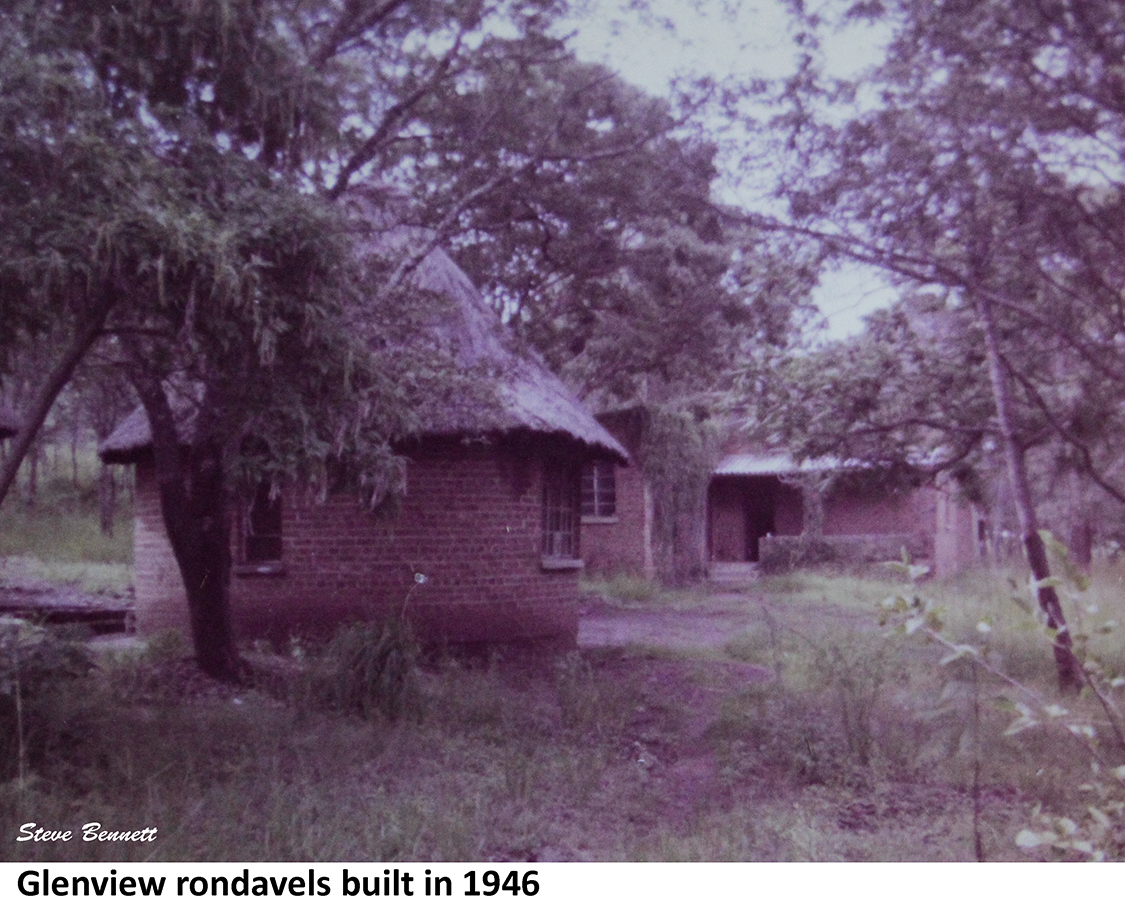 Dennis and Helen married in September. Ted Bennett owned 100 acres on a property called Glenview. Tom Pascoe’s builders from neighbouring Crowborough Farm built the kitchen/lounge with two rondavels. They were under the trees around the corner from the main house. Helen was teaching at Girls High School.
Dennis and Helen married in September. Ted Bennett owned 100 acres on a property called Glenview. Tom Pascoe’s builders from neighbouring Crowborough Farm built the kitchen/lounge with two rondavels. They were under the trees around the corner from the main house. Helen was teaching at Girls High School.
Helen knew a doctor at Bonda Mission so Teddy was born there.
Dennis qualified as a Chartered Accountant with Pulbricks in 1949 and he left in 1952 when he started ‘Bennett and Fannin’ with Fort Fannin who had qualified in Natal. During WWII he had been captured in North Africa at El Alamein and survived the ardous journey to be held a prisoner of war in Germany. Dennis, Helen and the three boys moved to the suburb Chisipite in February 1955. Steve remembers the drive from Glenview when his feet were resting on top of the canary birdcage in the back seat.
There were only eight houses occupied when the family of three boys moved to Dover Road in Chisipite in 1955. They included the Bennetts, Eksteins, MacGintys and Hammonds. The Bennett home was initially Plot 51, then No 30, and finally renumbered 21. It had two 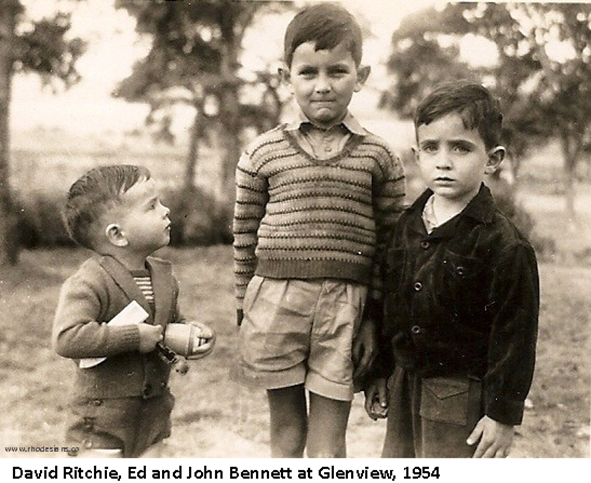 bathrooms so was bigger than the other four Costain homes, except for the Kelly’s across the road which they had built themselves.
bathrooms so was bigger than the other four Costain homes, except for the Kelly’s across the road which they had built themselves.
John had been born in Umtali and Steve was born at Greenwood Park in Salisbury.
Susan was born later in that year, also at Greenwood Park. Steve had been suspected to have meningitis so had a lumbar puncture to check his spinal fluid.
When Susan was still small, her mother had to go to town so Susan was taken up in her pram up the drive and she was left for Mrs Kelly to look after. The faithful bull terrier dog, Rory, followed them up the hill then went to sleep under the pram. When Susan started to cry this got Rory quite agitated. When Mrs Kelly wanted to tend to Susan, Rory growled at her so Susan kept crying as no one could approach her to comfort or feed her. Rory kept everyone away until the parents returned. Rex, the Kelly’s own dog, had kept out of the way as he had lost many skirmishes in the past and survival was more important than his pride.